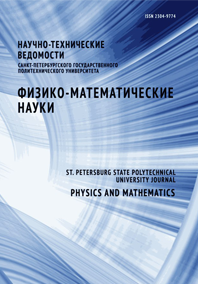Formalized model of cellulose thermopolarization processes in natural wood in a non-uniform temperature field
Temperature fluctuations are the most common and significant factor in the environmental impact on the properties of plastic and biocomposite materials. Therefore, the development of a fundamental concept of the conformation mechanisms of long molecules under conditions of stable temperature gradient is one of the urgent problems of modern technologies in the field of creating materials with given properties. The purpose of the research was substantiation of basic relation for conducting a computational experiment to determine the parameters of the kinetics process for thermally stimulated cellulose polarization within the framework of classical thermodynamics. The objects of the experimental study were microsections of cylindrical birch wood with a thickness of about several hundred microns. During the measurement, the specimens were placed between two massive cylindrical measuring electrodes. Heating was carried out at a constant rate, ensuring the constancy of the temperature gradient along the cut thickness. A potential difference was formed in the wood under experimental conditions due to pyroelectric and piezoelectric effects in cellulose crystallites. The emerging electric field contributes to polarization of the side groups of macromolecules in the amorphous part of the cellulose. In this work, a basic model relation for calculating the potential difference was obtained. The difference occurs in a thin wood specimen. Model efficiency was determined by the method of estimating the dimensionless Nash-Sutcliffe criterion. The proposed model can be applied for data systematization on the thermally stimulated biocomposite polarization (with crystalline and amorphous components). Systematization is made by means of computational experiment to determine the parameters characterizing their unique features.


